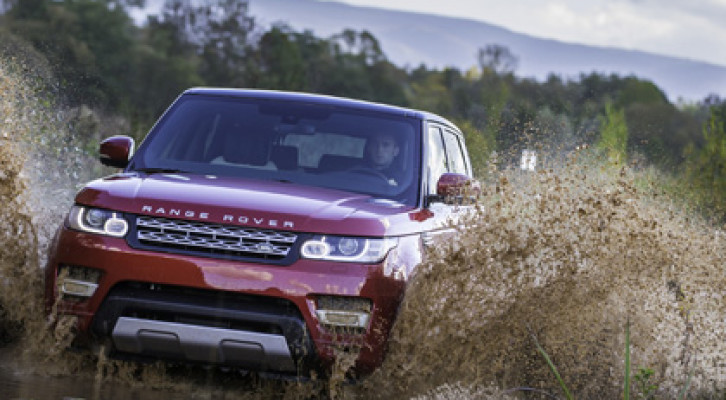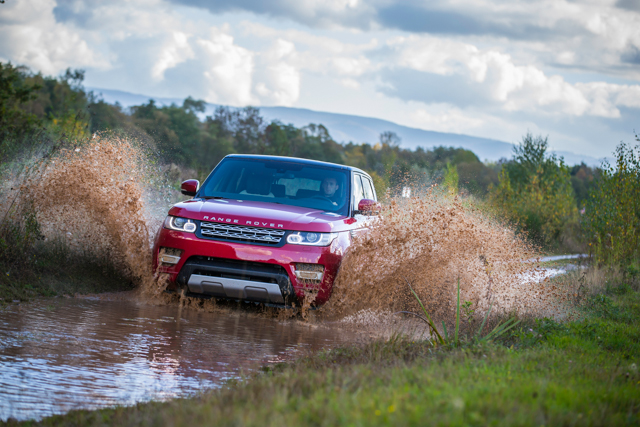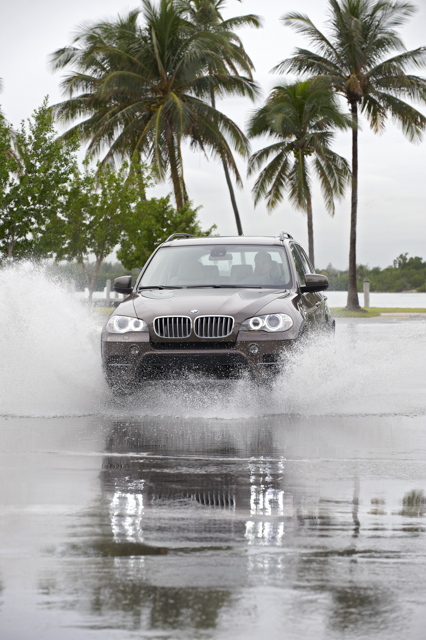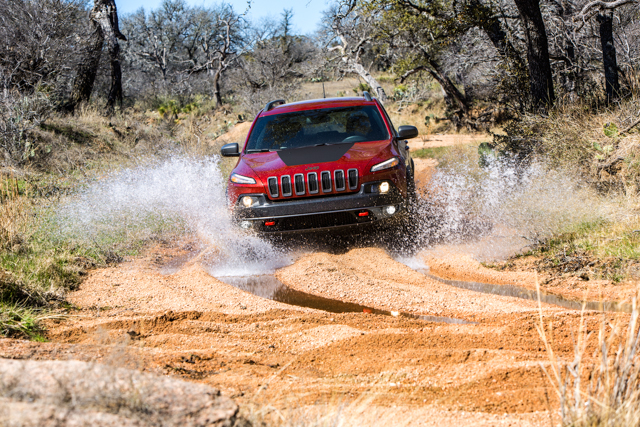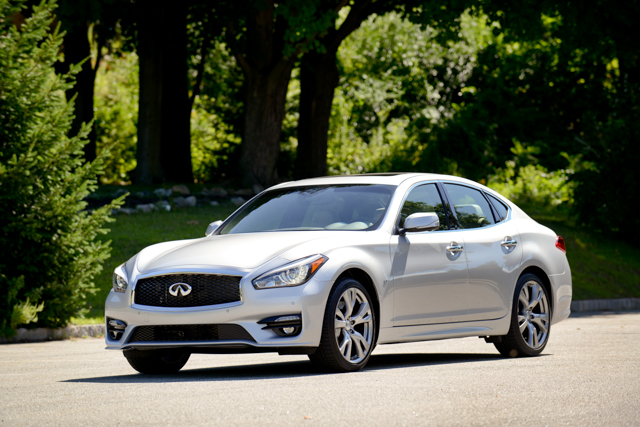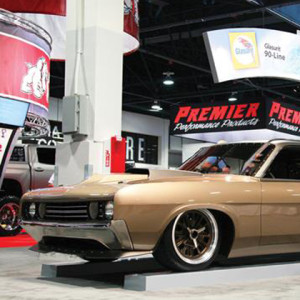New-car season is a funny time, and this year dropped me into close contact with three very different sport-utes in rapid succession. It was only natural that comparisons would arise among the three, and so I found myself considering one of the most lopsided comparison tests ever.
The BMW X5 and Land Rover Range Rover Sport actually are natural enemies in the premium “sport-activity vehicle” segment. While the BMW traditionally has been more pavement-bred than the Range Rover Sport, both vehicles have taken great strides forward in what were once their weak areas. Will there be much customer overlap? Probably not.
The new Jeep Cherokee comes completely out of left field. Half the price of the other two, and sporting only four and six cylinders where the others get supercharged and turbocharged V-8s , the Cherokee found itself in this head-to-head simply by dint of unfortunate scheduling. Or would it be fortuitous?
The X5 and Range Rover Sport generally have avoided direct hostility based on one fact: The X5 is a pavement-bred vehicle, while Range Rover has the advantage off-road. That’s no longer the case. The X5 has gotten a bit better off-road, but the Range Rover Sport has gotten MUCH better on pavement. It’s lighter on its feet, more responsive, and easily the equal of the X5 in the twisties. For all of that, it’s still got greater wheel articulation and years of off-roading experience behind it. The result? The Range Rover Sport will claw its way through terrain that will leave an X5 requesting a helicopter rescue. It’s easier to manage off-road as well. Both have 360-degree cameras, but the Range Rover Sport has better visibility off-road, everywhere except to the immediate front of the vehicle, so it’s much easier to place when crawling through obstacles.
The Cherokee is a surprise. It’s aimed at the suburbs, since its primary competition is soft-roaders such as the Honda CR-V and the Toyota RAV4. But the off-road Trailhawk model adds more than just an assortment of off-road friendly tow hooks and fascias. Jeep has borrowed the Terrain Response and SelectSpeed systems from the Grand Cherokee, and coupled with the Jeep Active Drive four-wheel drive system with low-range and a locking rear differential, the Cherokee Trailhawk actually is a very capable off-road crawler — enough to leave the X5 in the dust (or mud) for half the price. Like Land Rover, a history of off-roading experience is telling.
Things are looking a bit grim for the Germans, but the comparison isn’t over yet. BMW has a distinctive edge in terms of ergonomics. This is a pretty significant matter to consider, since the interior environment is always the same, on pavement or off. For controlling accessories and navigating vehicle info, iDrive’s rotary dial puts Land Rover’s touchscreens on the trailer. The X5 is much easier to work with and live with in terms of ergonomics — and that’s saying something, considering BMW’s tendency to be inscrutable. I found the navigation systems, radio and climate controls much more intuitive in the BMW. The Range Rover Sport looks wonderful inside — and has a slight edge in seat comfort, front and rear — but it’s hard to beat iDrive for ease of use. The Cherokee lags behind the more expensive vehicles in comfort, but our underdog is available with a wide range of cool interior colors and design “themes” that would be at home in any luxury car. Seating is a bit tighter, which isn’t the Cherokee’s fault; it’s smaller. To its credit, it was just as quiet on the road as either of the luxury rides. All three vehicles are available with full-length sunroofs.
I chose to compare the V-6 Range Rover Sport to the six-cylinder X5 xDrive35d, since challenging the Range Sport’s available 510-horsepower supercharged V-8 is a job best left to the high-performance X5 (rather than the V-8-powered X5 xDrive50i, which gives up 60 horsepower to it). In this head-to-head, the X5’s 258-horsepower diesel six is the powertrain of choice. The Range Rover Sport’s 340-horsepower supercharged V-6 is plenty powerful on- and off-road, but the BMW diesel’s got 413 pound-feet of very relaxed torque that would be much easier to live with on a day-to-day basis. The Range Rover’s got the edge in horsepower but the diesel’s endless torque provides a much smoother ride — it’s effortless when it needs to be, and will get up and go when requested. There’s no denying the fun factor of the growly V-8 in the Range Rover Sport (or in the X5, for that matter), but in an apples-to-apples comparison the X5 diesel has the edge. Perhaps I’ll get an X5 M for a direct challenge later.
The 3.2 liter V-6-powered Cherokee was a pleasant surprise; with 271 horsepower and 239 pound-feet of torque on tap, the compact Cherokee turns the wheels with authority. It’s more refined than many of its competitors, and feels much like a miniature Grand Cherokee when fully trimmed out. What it lacks in top-end performance, it makes up for in smoothness; the Cherokee’s nine-speed transmission results in decent fuel economy on the freeway. Out on the highway, both the Range Rover and X5 eventually will run away from it, of course. The larger, Autobahn-bred SUVs are confident and stable up into triple digits, while the Cherokee begins to feel a little uncertain at 10 or 15 clicks over the 70 mph limit. But hey, why are you going so fast anyway? Slow down, before you kill somebody!
At the end of the day, with price being no object, I’d choose the V-8-powered Range Rover Sport as the best toy, the BMW X5 xDrive 35d as the best road-tripper, and the Cherokee Trailhawk as the price-is-an-object easiest to live with.
Want to see another ridiculous, outside-the-box comparison test? Drop me an email!

